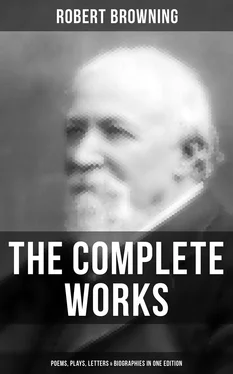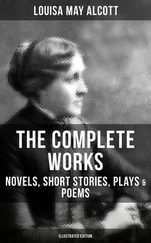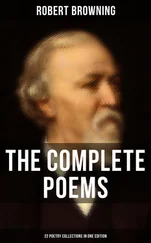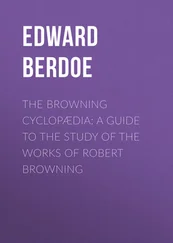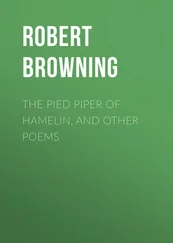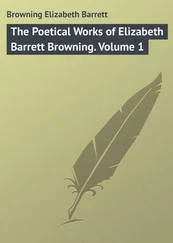The “Yellow Book” was probably picked up in June of 1860 before going to Rome for the winter—the last my father passed in Italy. As it had always been understood that the Book should be presented to Balliol, I went soon after my father’s death to stay a few days with Jowett, and gave it to him.
In the portrait that hangs in Balliol Hall I painted my father as he sat to me with the Book in his hands.
Nothing would have gratified him more than what you tell me about the interest with which his works are studied in America, and I need not say how much pleasure this gives me.
Believe me with many thanks for your kind letter,
Yours Very Sincerely,
R. Barrett Browning.
A very curious discovery was made in Rome, in the winter of 1900, by Signer Giorgi, the Librarian of the Royal Casanatense Library, in an ancient manuscript account of curious legal trials, among which were those of Beatrice Cenci, of Miguel de Molinos (in 1686), and of the trial and sentence of Guido Franceschini. The fact that taxes credulity in regard to this manuscript, of whose existence, even, no one in modern times had ever dreamed, is that the three points of view, as presented by Browning in the “Half Rome,” “The Other Half Rome,” and “Tertium Quid,” are in accord with those given in this strange document, which for more than a century had lain undisturbed in the archives.
In a little explanation regarding the significance of the closing lines of “The Ring and the Book,” also kindly given by Robert Barrett Browning, it seems that his mother habitually wore a ring of Etruscan gold, wrought by Castellani, with the letters “A. E. I.” on it; and that after her death the poet always wore it on his watch-chain, as does now his son. In the tablet placed on Casa Guidi to the memory of Mrs. Browning (the inscription of which was written by the Italian poet, Tommaseo) the source of the other allusion, of the linking Italy and England, is found. As the reader will recall, the lines run:
“And save the soul! If this intent save mine,—
If the rough ore be rounded to a ring,
Render all duty which good ring should do,
And, failing grace, succeed in guardianship,—
Might mine but lie outside thine, Lyric Love,
Thy rare gold ring of verse (the poet praised)
Linking our England to his Italy!”
Dr. Corson especially notes Browning’s opening invocation to his wife, praying her aid and benediction in the work he has undertaken. “This passage,” says Dr. Corson, “has a remarkable movement, the unobtrusive but distinctly felt alliteration contributing to the effect.”
“O lyric Love, half angel and half bird
And all a wonder and a wild desire,—
Boldest of hearts that ever braved the sun,
Took sanctuary within the holier blue.”
That Browning could never have created the character of Pompilia, save for that all-enfolding influence of the character of his wife, all the greater critics of “The Ring and the Book” agree. To Dr. Corson, Browning said of her:
“I am not sorry, now, to have lived so long after she went away, but I confess to you that all my types of women were beautiful and blessed by my perfect knowledge of one woman’s pure soul. Had I never known Elizabeth, I never could have written ‘The Ring and the Book.’”
Of Pompilia Dr. Hodell also says:
“... But there is another influence in the creation of this ideal character beside that of the Madonna, it was the Madonna of his home, the mother of his own child, whose spiritual nature was as noteworthy as her intellect. And before this spiritual nature the poet bowed in humble reverence.”
Mrs. Orr, too, has written:
“Mrs. Browning’s spiritual presence was more than a presiding memory in the heart. I am convinced that it entered largely into the conception of Pompilia.
“It takes, however, both the throbbing humanity of Balaustion and the saintly glory of Pompilia to express fully the nature of Elizabeth Barrett Browning as she appeared to her husband.”
Dr. Dowden, Brooke, Corson, Herford, Hodell, Chesterton, and other authoritative critics allude to their recognition of Mrs. Browning in the character of Pompilia; and no reader of this immortal masterpiece of poetic art can ever fail to find his pulses thrilling with those incomparable lines, spoken in her last hour on earth by Pompilia:
“O lover of my life, O soldier-saint,
No work begun shall ever pause for death!
Love will be helpful to me more and more
I’ the coming course, the new path I must tread—
······
Tell him that if I seem without him now,
That’s the world’s insight! Oh, he understands!
······
So let him wait God’s instant men call years;
Meantime hold hard by truth and his great soul,
Do out the duty!...”
In the entire range of Browning’s heroines Pompilia is the most exalted and beautiful character.
Table of Contents
“I am strong in the spirit, deep-thoughted, clear-eyed;
I could walk, step for step, with an angel beside,
On the heaven-heights of truth.
Oh, the soul keeps its youth
······
“’Twixt the heavens and the earth can a poet despond? O Life, O Beyond, Thou art strange, thou art sweet!”
In Scotland with the Storys—Browning’s Conversation—An Amusing Incident—With Milsand at St. Aubin’s—“Red Cotton Night-cap Country”—Robert Barrett Browning’s Gift for Art—Alfred Domett (“Waring”)—“Balaustion’s Adventure”—Browning and Tennyson—“Pacchiarotto”—Visits Jowett at Oxford—Declines Lord Rectorship of St. Andrews—“La Saisiaz”—Italy Revisited—The Dream of Asolo—“Ivanovitch”—Pride in His Son’s Success—“Dramatic Idylls.”
In the summer of 1869 the Storys, with their daughter, came from Rome and joined Browning with his sister and his son, for a holiday in Scotland. They passed some time at a little inn on Loch Achnault, where Lady Marian Alford also came, and there are still vivid reminiscences of picnic lunches on the heather, and of readings by the poet from “The Ring and the Book.” Chapters from “Rob Roy” also contributed to the enjoyment of evenings when the three ladies of the party—Mrs. Story, Lady Marian, and the lovely young girl, Miss Edith Story—were glad to draw a little nearer to the blazing fire which, even in August, is not infrequently to be desired in Scotland. Lord Dufferin was also a friend of those days, and for the tower he had built at Clandeboye in the memory of his mother, Helen, Countess of Gifford, Browning wrote, soon after, his poem entitled “Helen’s Tower.” Mrs. Orr speaks of this poem as little known, and not included in his published works; but it is now to be found in all the complete editions of Browning. After this Arcadian sojourn Browning and his son, with Miss Browning, were the guests of Lady Ashburton at Loch Luichart Lodge.
For two or three years after the publication of “The Ring and the Book,” Browning wrote little. The demands of friends and of an always enormous correspondence occupied much time; his son was growing into young manhood, and already manifesting his intense love of art, and his gifts as both painter and sculptor.
Browning’s conversation was always fascinating. It was full of glancing allusion, wit, sparkle, and with that constant undertone of significance that may be serious or gay, but which always lingers with a certain impressiveness to haunt the mind of the listener. Dr. Hiram Corson, who may perhaps be regarded as Browning’s greatest interpreter, speaks of one of his visits to the poet, in London, where the conversation turned from Shelley to Shakespeare. “He spoke with regret of the strangely limited reading of the Plays, even by those who believe themselves habitual and devoted readers,” says Dr. Corson.
Читать дальше
